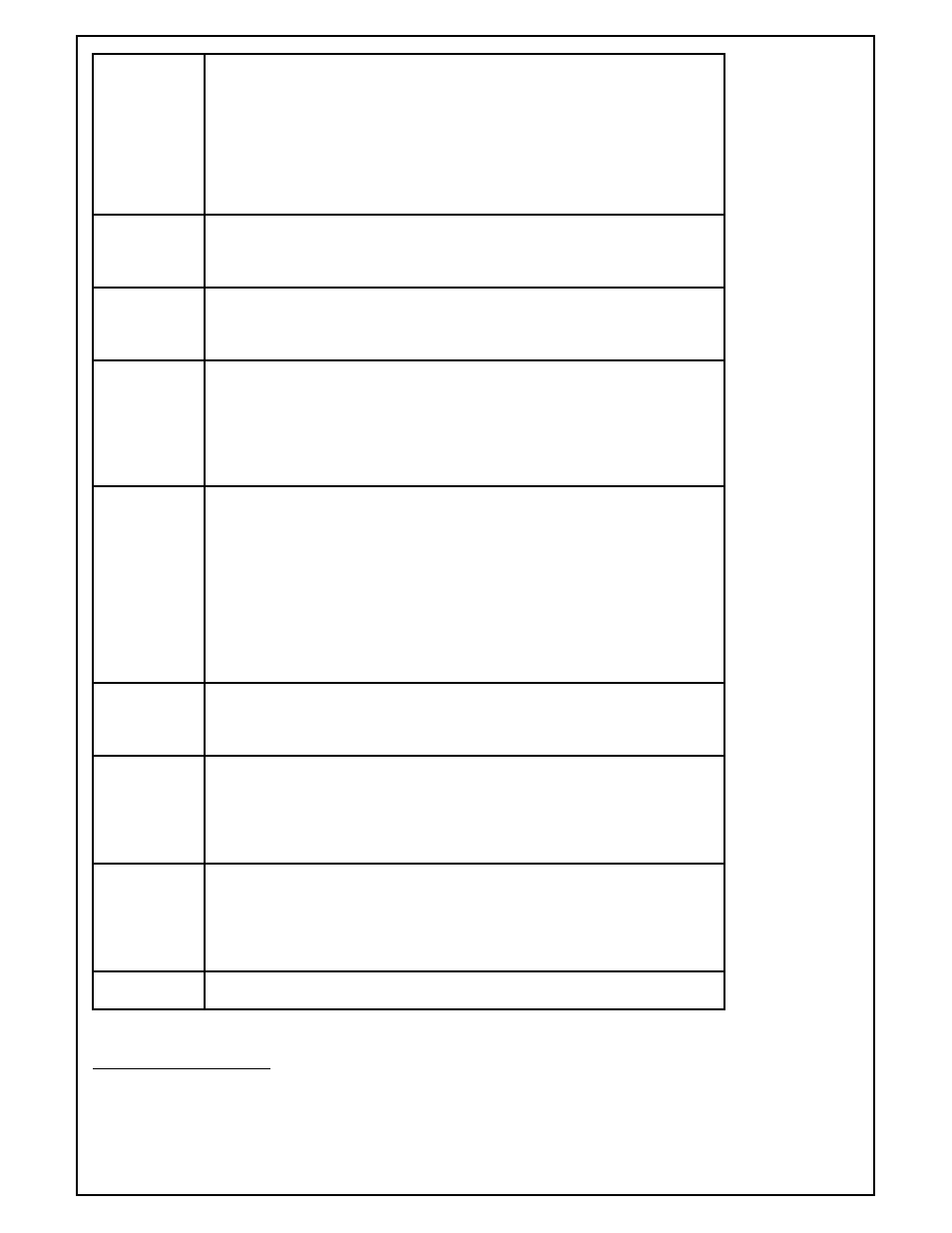Super Systems SuperDATA User Manual
Page 36

Super Systems Inc
Page 36 of 172
Super Data Operations Manual
To configure SDIO to read this instrument you must specify the data to be
read by type and count. The maximum counts for each type are specified
next to the instrument type below. The values read are mapped to slots (0-
77) in the order specified above. Maximum slots per logical channel is 78,
this must be considered when configuring this instrument. For additional
information on Honeywell DPR3000 data addressing refer to Honeywell
Manual EN1l-6127 (DPR3000 250mm Strip Chart Recorder Modbus RTU
Communications Option Manual).
HWM_DPR3000 (max IN:32,DIN:12,AB:192)
IN:
Optional. Specifies the number of ANALOG INPUTS to read. 1 slot is used
for each input read.
Example:
IN:4 reads ANALOG INPUTS 1-4 and uses 4 slots.
DIN:
Optional. Specifies the number of DIGITAL INPUT values to be read. 1 slot
is used for each value read.
Example:
DIN:3 reads DIGITAL INPUT Values 1-3 and uses 3 slots.
AB:
Optional. Specifies the number of ALARM BITS to be read. 1 slot is used for
each group of 16 alarm bits read.
Examples:
AB:2 reads 2 ALARM BITS and uses 1 slot.
AB:12 reads 12 ALARM BITS and uses 1 slot.
AB:16 reads 16 ALARM BITS and uses 1 slot.
AB:20 reads 20 ALARM BITS and uses 2 slots.
SMULT:
Optional. Specifies Slot Multipliers. A multiplier may be specified for any of
the 78 slots (slots 0-77). Format as follows:
SMULT:SSxVALUE,…,SSxVALUE
Example: SMULT:2x100,12x0.01
The example applies a multiplier of 100 to
slot 2 and a multiplier of 0.01 to slot 12. If not specified, the default
multiplier is 1.
Note: In the MODBUS protocol data is sent as binary WORD
registers, one WORD normally represents an Integer value. However, in this
protocol, two words are used to send floating point data as MANTISSA and
DECIMAL indicator. In SuperData all data is stored as Integer with implied
decimal locations. Thus a floating point value of 1.12 would normally be
stored in SuperData as 1. To store the value in SuperData as 112 with
implied decimal of 2, specify a slot multiplier for the associated slot.
NOLOG
Optional. Applies to ALL instruments.
Do not log data from this channel.
Include this when communications are required for real-time data but are not
required for historical data logging. If this is not included, the channel will be
data logged at one minute intervals.
ALM
Optional. Applies to Channels that contain bitmapped alarms.
The ALARM
configuration setup.
ALM(PAL slot, Alarm offset, Alarm Bitmap Start Slot,
Alarm ACK Bitmap Slot, Number of Bitmap Slots).
Normally this will be
configured by SSI personnel familiar with the application. If you are not sure,
do not include Bitmapped support. Invalid configurations may cause spurious
invalid alarms to be reported on RealTime and in AlarmReports.
ABC
Optional. Applies to ALL instruments.
Alarm Block Configuration .
Caution:
any specified channel can use either ALM or ABC but not both.
Allows a
custom Alarm Block Bitmap (one word) to be setup for any instrument but
generally used only for non-programmable instruments that are not capable of
maintaining alarm bitmaps. See the section on Custom Alarm Block
Configuration.
TAG
Required. Applies to ALL instruments.
Instrument name. Limited to 12
Characters with no spaces.
Yokogawa CPL Instruments
[C]CH#LLL(PPP ) = "ID,[CB:xxx-yyy],…,[CB:xxx-
yyy],[SMULT:SSxVALUE,…,SSxVALUE],[NOLOG],[ABC] " = "tag "
